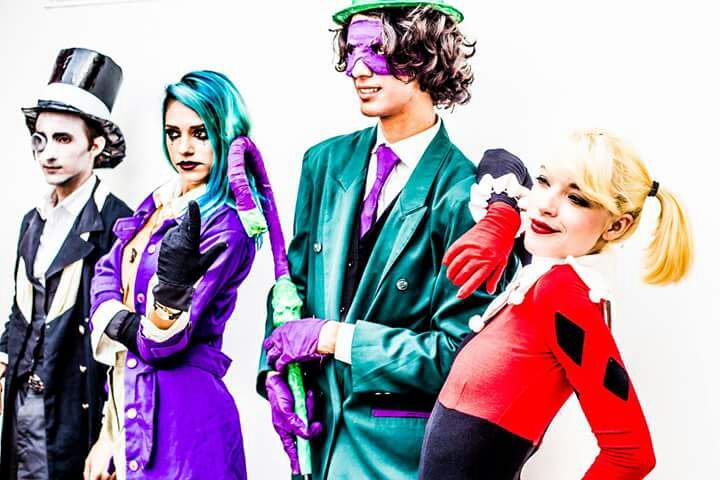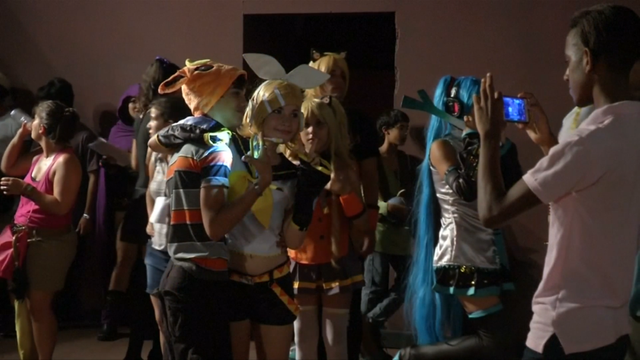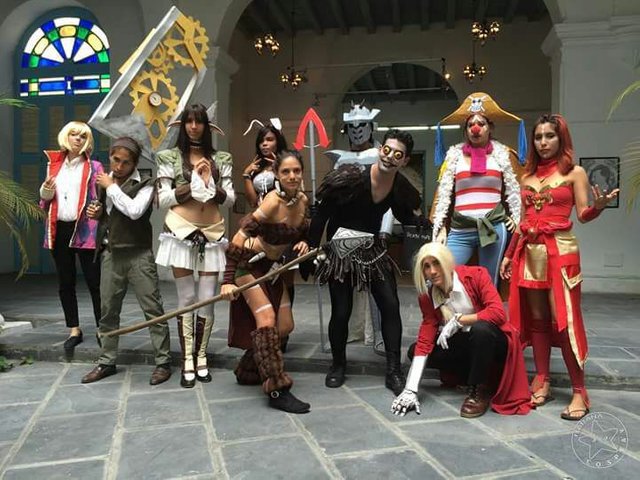habana, Goodbye Tamagotchi, welcome Cosplayers!!

The kids of my generation had an odd hobby that I don’t think existed in any other country. We would collect the wrappings from different products, like candies, cereal and such. Most important, they had to have pretty, eye-catching colors. Now, as I am remembering all this, I find it funny but also somewhat sad because many times we had wrappings of sweets that we hadn’t even eaten. Yup, that was what it was like growing up in the 1990s. Something else that my childhood revolved around was the Tamagotchis, electronic devices which looked like eggs and had “pets” that children had to feed. I didn’t have any of these and I’m grateful for that because the truth of the matter was that kids used to forget about their toy and those “critters” would be dying all over the place, filling their owners with guilt. That’s right: toys can be a big pain in the neck!

Let me get to my point: children’s customs have changed, the same way the country—slowly—has changed. Kids no longer save colorful wrappers, instead they are playing with sophisticated video-consoles and they exchange Bluetooth information.
Dropping into this variegated landscape, we have the otaku, or anime fans, who are legion, getting together all over the city to share their hobby. It isn’t just a matter of watching Japanese films or series but also of imitating the style of their favorite characters. Cosplayers have gradually joined the youth culture of the nation. With them, this particular entertainment industry has also arrived to a certain degree—an industry that is sometimes missing in this country, which marked by “the damned circumstance of water everywhere.

The Otakus Boom
“Gradually the need to exchange information among persons who are interested in this world has been happening. At first we were few in numbers, but with time many more have joined us. Nowadays there is a sort of fascination with otaku culture in Cuba, a sort of fad. You merely see a series and you think you are otaku. I don’t think that’s how it is; it’s a way of being entertained but it does require study and time to learn what it’s all about,” Patty tells me. She is a very young cosplayer who has seen her passion become a lifestyle; she has just graduated from the University of the Arts, aka ISA, in fashion design.
“You get started in this and say: “I’m not going to do another costume; this is the last one.” But you just can’t do that. You find an animated film that impresses you and you start all over again. Every cosplayer has a super long list of characters they’d like to play. That why I don’t have a favorite one; I think that in any case, it will be the next one I will make, just for the excitement of what it’s going to be.”
Costume competitions, lectures, workshops for making costumes…those are some of the activities that have the young people enjoying their hobby. Unlike anything many believe, cosplayers are not necessarily followers of Japanese culture, although in Cuba the costumes generally always refer to manga characters. In the rest of the world, there are other trends such as Disney or fantastic literature.
“It can be very complicated to make a costume in Cuba. You see the characters in the movies and you are always sucked in by the idea that “it looks easy to make” and you fall in love with the project. But in real life you have to be extremely crafty to put it together. Not only do you need the material , there’s also silicone, metal, paper…and anything else you can think of. Sometimes I make the costumes from the ground up, other times I transform existing clothing. In any case, it takes time, effort and a whole lot of creativity”.

Habana Cosplay
Four years ago, Patty and other fans founded the Habana Coplay Group for the aim of publicizing a culture that was in its infancy in Cuba. “At otaku meetings some of us used to wear costumes because we especially liked that practice, and so we decided to get together to help each other as fans. We’ve given workshops to teach others how to make costumes. As time goes by, we’ve tried out new techniques and materials and our results are better than they were at the beginning.”
The shortage of materials and professional sewing machines is one of the most obvious hurdles for Cuban cosplayers. But the huge parade of fans that took place at the just-concluded Otaku Festival demonstrates that there are many followers of this culture (and they are very creative).
“At our competitions, we don’t just judge how the costumes and weapons are made; we also take into account the cosplayer’s interpretation, how they perform. It’s assumed that a cosplayer is able to put together his or her costume but they also have to act out some of the traits of their character. In my case, that’s where I have to make more of an effort because I’m shy.”
It looks like this form of entertainment is attracting more and more young people. And I (approaching my 30th birthday) have a hard time thinking that my beloved collections of clippings should be relegated to oblivion. I believe that’s what some sage called “getting old.” Anyway, I console myself with the thought that every generation reinvents its own fantasies.